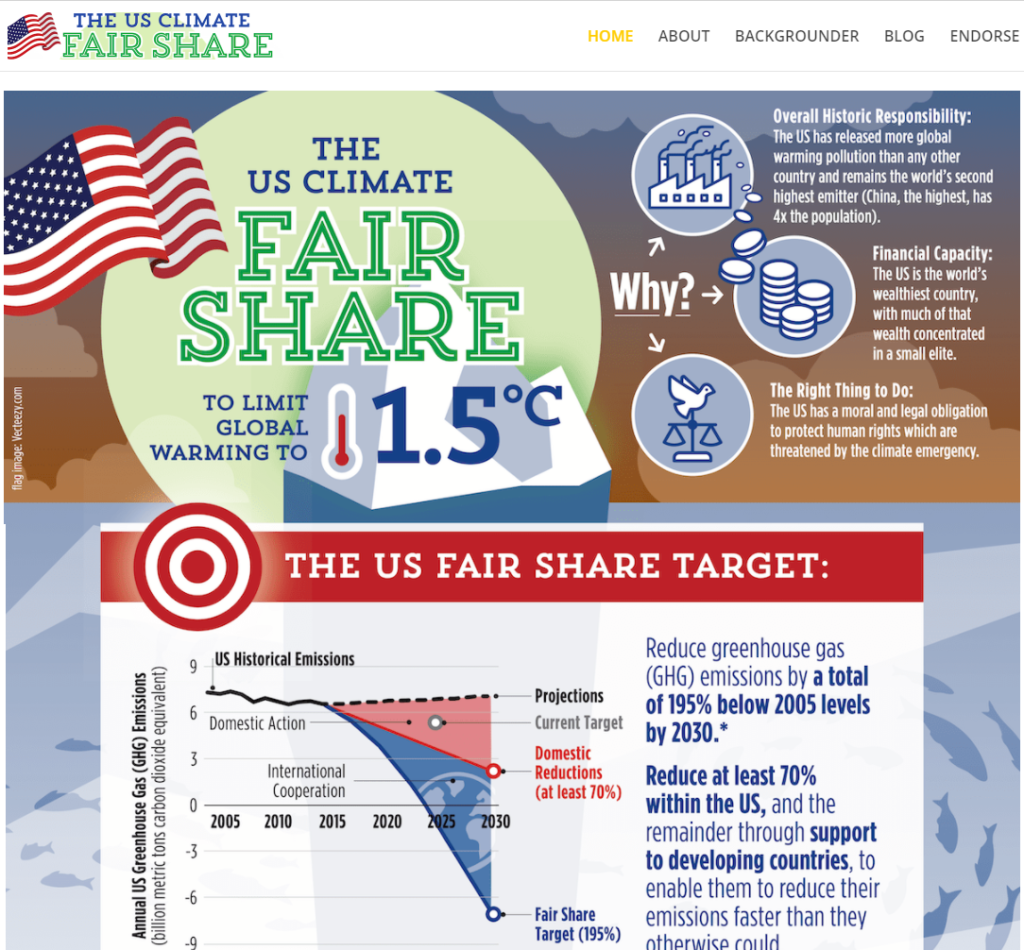We are all concerned about climate change, which is already causing so many floods, wildfires, heat waves, droughts, and extreme storms. Because of these events, we are facing health threats, stress, PTSD, and changes to agriculture and our lives.
What should the United States be doing to keep global temperature rise to 1.5degreesC? Should the U.S. do the bare minimum, or should it do more considering how much greenhouse gases (GHG) we have already made? What is our fair share of the climate change effort?
Historically, the U.S. has released more GHG than any other country in the world. Right now, we are the 2nd highest emitter. China is the largest current emitter, but it has 4 times the population of the U.S. We are making far more GHG per person than any other country.
If left unchecked, climate change will continue to cause devastating health effects from an increase in air pollution, extreme weather events, infectious diseases, and heat related illnesses. Our children’s health and futures are at stake – we need our decision makers at every level of office to support climate action.
The Paris Accord which the US signed, pledges to keep global temperature rise to 2.0degreesC, preferably 1.5degreesC. To hold warming to 1.5degreesC, the United States needs to reduce emissions at home by 70% below 2005 levels by 2030.
USFairShare and USCAN (US Climate Action Network) have determined that because the United States has released so much GHG emissions in the past, our fair share is to reduce U.S. emissions by 70% (below 2005 emissions) by 2030. The whole world needs to reduce emissions by 50%, but the U.S. needs to commit to more than 50%, in order to get the world to 50%. This is based on our moral and ethical responsibility for the excess damage we have already caused.
Read more about the US Fair Share plan and why it is so important.
04/14/2021





